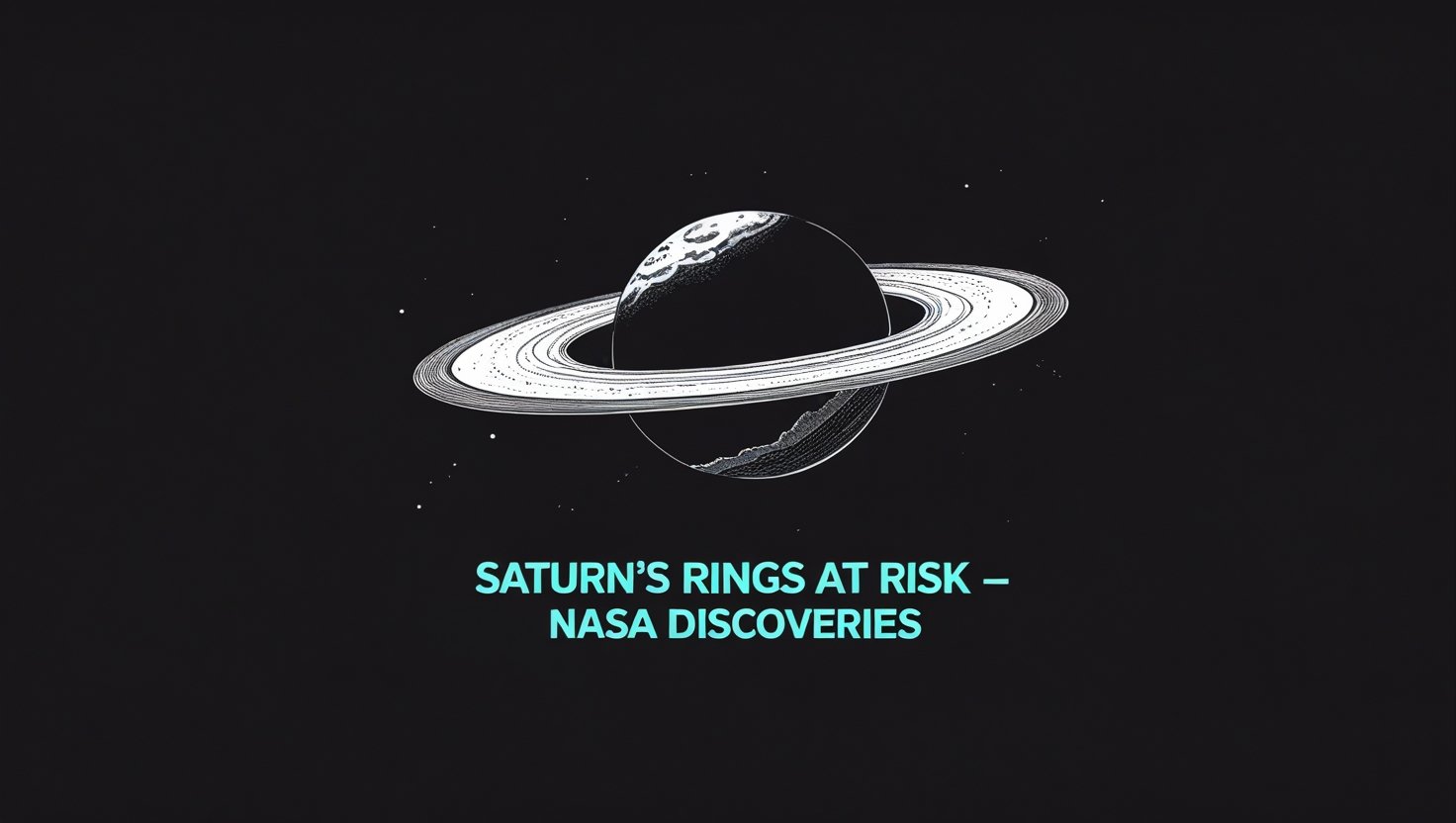For centuries, Saturn’s majestic rings have been one of the most iconic sights in the night sky, captivating humanity with their breathtaking beauty. However, recent groundbreaking discoveries by NASA have revealed a startling truth: the rings are not a permanent fixture. They are, in fact, disappearing at an alarming rate. This shift from a timeless celestial wonder to a fleeting cosmic spectacle is driven by a phenomenon scientists call “ring rain.”
The Unveiling of “Ring Rain”
The concept of a “ring rain” has been discussed for decades, but it was NASA’s Cassini mission that provided the definitive data to confirm this icy downpour. The mission, which orbited Saturn for 13 years, discovered that tiny, charged particles from the rings are being pulled into the planet’s atmosphere by its powerful magnetic field and gravity.
- How it Works: The rings’ particles, which are mostly water ice, are constantly bombarded by ultraviolet radiation from the sun and plasma from micrometeoroid collisions. This process gives them an electric charge. Once charged, the particles are no longer held in a stable orbit and are pulled along the planet’s magnetic field lines, vaporizing as they enter the upper atmosphere.
- The Astonishing Rate: This isn’t just a slow trickle. NASA’s Goddard Space Flight Center estimates that this “ring rain” drains enough water to fill an Olympic-sized swimming pool every half an hour. It’s a shocking revelation that has drastically shortened the rings’ estimated lifespan.
The Shortened Lifespan:
For a long time, scientists believed the rings were as old as Saturn itself, formed 4.5 billion years ago. However, the data from the Cassini mission has completely upended this theory. The sheer amount of ring material falling into the planet suggests that the rings are much younger, likely formed between 10 million and 100 million years ago. This makes the rings at risk a relatively recent addition to our solar system’s history, potentially forming during the age of dinosaurs.
This new, shorter timeline means we are incredibly lucky to be alive during the rings’ “mid-life.” In a cosmic blink of an eye, within an estimated 100 to 300 million years, the rings could be gone completely. The process is not uniform; the innermost rings are disappearing first, slowly followed by the outer ones. This paints a picture of a gradual fading, a slow erosion of a defining planetary feature.
The Science Behind the Disappearance:
The physics behind the ring rain is a complex interplay of forces. The particles in the rings are in a delicate balance between Saturn’s gravity, which wants to pull them inward, and their own orbital velocity, which wants to fling them outward.
When the particles become charged, the force from Saturn’s magnetic field comes into play. The magnetic field lines curve inward, pulling the charged particles toward the planet’s poles. The particles, once trapped by this magnetic “funnel,” are then dragged into the atmosphere where they burn up, leaving behind a “rain” of water, hydrocarbons, and silicates.
Beyond the Rings:
The Cassini mission wasn’t solely focused on the rings’ demise. Its findings have revolutionized our understanding of the entire Saturn system.
- Enceladus’s Geysers: Cassini confirmed that Saturn’s moon Enceladus is spewing plumes of water ice and gas from its south pole. This discovery led to the hypothesis of a subsurface salty ocean, making it one of the most promising places in the solar system to search for life. Some of this material also contributes to the “ring rain.”
- The Propeller Moonlets: Cassini discovered small moonlets embedded within the rings that create “propeller-shaped” gaps. These findings provided new insights into how planets form from discs of material and how moons can interact with ring systems.
- Titan’s Lakes: The Huygens probe, which was part of the Cassini mission, landed on Saturn’s largest moon, Titan, and discovered liquid methane lakes and rivers, making it the only other body in the solar system with stable liquid on its surface.
These discoveries highlight the mission’s incredible success and show that even as we learn about the demise of a beautiful feature like Saturn’s rings, we are simultaneously uncovering new secrets about the universe.
Conclusion:
The notion of Saturn’s rings at risk is a powerful reminder of the dynamic and ever-changing nature of the cosmos. Thanks to NASA’s groundbreaking discoveries, we know that what we see as a timeless feature is, in fact, a temporary, albeit grand, spectacle. The ring rain will continue to erode this cosmic halo until it eventually disappears, leaving a ringless Saturn for future generations to observe. We are fortunate to witness this remarkable stage in the planet’s life, and the discoveries made along the way have opened new doors in planetary science, from understanding our own solar system to the search for extraterrestrial life.
FAQs:
1. What exactly is “ring rain”?
“Ring rain” is the process of water-ice particles from Saturn’s rings being pulled into the planet’s atmosphere by its gravity and magnetic field.
2. Why are Saturn’s rings disappearing?
The rings are being drained into Saturn by the planet’s gravitational and magnetic forces, a process confirmed by the Cassini mission.
3. How long will the rings last?
NASA’s research suggests the rings could be gone within 100 to 300 million years, a very short period in cosmic terms.
4. Did ancient people see Saturn’s rings?
Yes, the rings would have been visible to early observers, but their appearance changes as Saturn orbits the sun.
5. Does this happen to other planets with rings?
Yes, other giant planets like Jupiter, Uranus, and Neptune also have faint rings that are believed to be similarly eroding.
6. What is the Cassini mission?
The Cassini mission was a NASA spacecraft that orbited Saturn for 13 years, making unprecedented discoveries about the planet, its moons, and its ring system.
